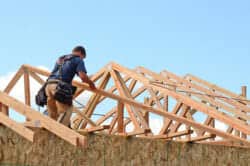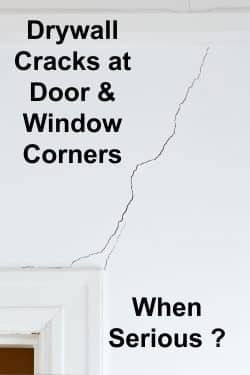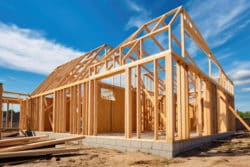Are drywall cracks caused by seasonal changes | You’ll be surprised
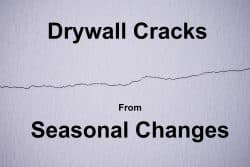
Structural engineers will tell you that seasonal changes are one of the causes of drywall cracks. Three of the most common areas you will find them are:
- Where a wall meets the ceiling
- At door and window corners
- Joints or seams where two pieces of drywall meet
Cracks in these three areas may also be caused for other reasons, other than seasonal changes, therefore be careful not to jump conclusions on why the cracks appeared. One tip that cracks are from seasonal changes is that they may open and close seasonally, although this is not always the case.
What is it about seasonal changes that causes drywall cracks?
There are a number of reasons but most of them relate to the two following reasons.
- Temperature and humidity changes
- Soil movement caused by seasonal changes and poor drainage
Generally seasonal changes do not cause serious structural issues, however, over a number of years, structural damage may occur; thus, it’s important that a homeowner take pro-active measures to ensure that serious damage does not occur.

Temperature and humidity changes
Few homeowners think about the fact that temperature and humidity changes can cause cracks in their drywall.
Expansion and contraction
Drywall, like many other types of materials, expands when it gets warm and contracts when it cools off. This expansion and contraction may cause cracking and that is one of the reasons that the building code usually requires expansion joints in walls that are over 30 feet long. In cases where the seasonal differences are significantly different, even shorter walls may crack.
Not only is drywall subject to temperature issues, but the wood framing that the drywall is attached too, is likewise susceptible to this issue when there is a large differential in the humidity levels between the summer and winter months.
Large relative humidity and temperature changes may cause drywall cracks. These cracks are usually very thin in nature, are usually straight, do not have jagged edges and are not structural in nature. There are exceptions to this. A couple of exceptions may include truss uplift cracks and cracks that are at door and window coroners.
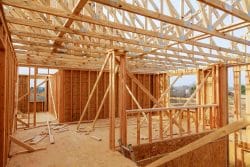
Wood moisture content and wood shrinkage
If a home has an extremely high humidity level, the wood framing may build up a higher than normal moisture content and when in lowers, there may be limited drywall cracks that appear.
Usually small and of limited structural concern. (Read about wood shrinkage causing drywall cracks and how it occasionally may cause structural damage)

Truss uplift
Truss uplift usually occurs in the winter months and is a result of temperature and humidity changes between the cold winter months and the hot summer months.
The trusses will bow upward and cause drywall cracks, generally where the wall meets the ceiling. (Read more about truss uplift and its causes)
Why soil movement causes drywall cracks
If the foundation moves, then what sits on top of the foundation moves

It just makes sense that if a homes’ foundation moves that whatever is sitting on top of it will move.
Unfortunately, foundations do not move as one solid whole piece of concrete, but they bow, flex, bend and even crack due to the soil pressures placed on them. The soils may expand, contract, settle, shift or move in many ways, creating uneven or non-uniform pressures or forces.
These changes in the forces and pressures placed on the foundation will then exert stress on the framing of the home. This stress will cause framing members to bow, flex, move or shift and at times to crack or fail.
When this happens, drywall will then bow, crack or separate at the seams where two pieces of drywall abut one another. These cracks may be hairline cracks and others may be larger; even a few that’s 1/8 of an inch, 1/4 of an inch or larger. These hairline cracks are often thought of as minor or cosmetic, however, larger cracks are more of a concern, depending on their size, location and cause.
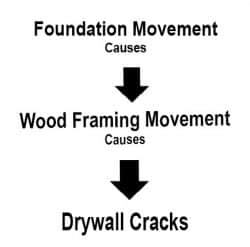
Seasonal reasons for soil movement
Rainy seasons. In rainy seasons foundations may shift upward, especially in soils that are expansive in nature, such as clayey types of soils, for they expand when they get wet and this causes many foundations to rise and at times crack. Unfortunately, the upward pressures are not uniform, and this causes more damage. In soils that are poor at supporting the weight of a structure, a home may settle in a heavy rainy season, especially if there was insufficient compaction of the soils that the home sits on.
Homes that are built on soils that have Slope Creep and landslides are likewise prone to have soil movement that will affect a homes’ foundation.
Hot summer months. In these months, expansive soils may contract causing the foundation to drop. This can cause cracking and if there is a sprinkler system near the foundation of the home, then the soils may actually swell upward if there is over watering of the area. Homeowners should check that their sprinkler systems are not over watering near the foundation and creating a foundation problem.
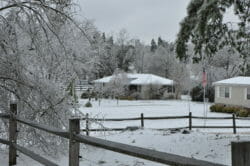
Frost heaving
Frost heaving, “Adfreezing” and “Ice Lenses” are conditions that involve water in the soil and freezing temperatures that basically pushes a home’s foundation upward or causes foundation movement and cracking. Homes built on soils that are expansive or silty in nature are more susceptible to moisture and freezing issues than others. Surprisingly, a foundation may move or shift anywhere from a 1/4 inch to as much as 2 or 3 inches.
These types of occurrences can easily cause drywall cracks and at times structural damage. In the United States these types of problems normally occur in Northern states and ones that have mountainous areas where the frost line is deep. (Read more on Frost heaving and Ice Lenses)
Control the temperature and humidity
Avoiding high temperature and humidity swings between seasons will help reduce or stop drywall cracking due to seasonal differences. Having devives like hygrometers, dehumidifiers, as well as, operating exhaust fans will help.
Hygrometers
Having an inexpensive Hygrometer will help monitor the temperature and humidity levels together and you will be able to know when the relative humidity is too high or too low.
Dehumidifiers
Many professionals recommend dehumidifiers to help reduce high humidity when it’s a problem. Not only are they useful in helping control high moisture levels affecting the drywall and framing, but they’re also helpful in damp areas, such as basements; thus, reducing the likely hood of mold and mildew.
Read our reviews of the top dehumidifiers
Exhaust fans.
Check your exhaust fans. Have properly sized exhaust fans in bathrooms, kitchens and laundry rooms is important, for these three rooms produce the most moisture in a home from an appliance standpoint. Often a contractor will install an exhaust fan in a bathroom that barely meets code exhaust requirements and might be considered “cheap” by some. If you notice humidity issues like mirrors fogging or moisture droplets on the wall in some seasons, then replacement of undersized fans could help. Note that there are also wall humidity sensors that can be used to replace an existing fan switch; they go on automatically when the humidity level is high.

Check for drainage issues that could affect the foundation
Keeping moisture or standing water away from your foundation is essential in reducing foundation movement issues. Most building jurisdictions require that the soils (ground) around your home slope away from the home’s foundation. Generally, they want it to be 6 inches lower at 10 foot out from the foundation.
Walk around the exterior of your house and see if the ground slopes away from the foundation, that water doesn’t run towards it or puddle near the foundation. If there are yard drains, check that they are draining properly and that the covers are not missing or damaged.
Downspouts
Not only is it important for the yard to drain properly, it’s important that the water runoff from your roof doesn’t fall next to your foundation or that the downspouts do not discharge water near the foundation.
The building code in most jurisdictions requires that down spouts discharge a minimum of 5 feet way from the foundation or discharge into an approved drain of some sort. If your downspouts are discharging water too close to the house and not into a drainpipe, then consideration should be given to adding an extension to the end of your downspouts, so as to get the water at least 5 foot away from the foundation.
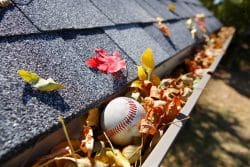
Gutters
Keeping the gutters clean and free flowing and the downspouts in good repair really helps. If the gutters or downspouts are damaged, bent or have parts missing, then they should be repaired. If a home doesn’t have gutters or meet proper roof drainage requirements, then it is wise to correct this issue.
Check to ensure that the gutters are clean and there is no leaking at connections. Cleaning the gutters often fall into a category of “that it’s not really important” or “I will do it some other time.” Seldom do homeowners realize how important good drainage is in preventing damage, including structural damage, to their home.
Check that the sprinkler system is not overwatering next to the foundation
If a home has a lawn sprinkler system, check to see if it is over-watering near the foundation. There should not be standing water, soggy soils or leaking hose bibs. While checking these items make sure that the sprinklers are not hitting the sides of the house, for this can cause damage to the siding and even mold or mildew under some conditions. In areas that have expansive soils, it’s even more important to check for overwatering.

Seasonal Changes
Seasonal changes may cause drywall cracks, fortunately they’re generally not a structural concern, but in a few cases they may be. These cases are often when there has been a significant amount of soil movement or when the seasonal changes over many years have weakened the structural connection points of the wood framing by expansion, contraction and movement every year.
Wide temperature and humidity changes from seasonal changes should be controlled to help reduce cracking and other issues. These can usually be reduced by wisely managing the temperature and humidity levels in your home.
You can also reduce cracking and damage by having proper drainage of your yard and roof, so as not to have too much water in the soil near your foundation.
In the broad view, seasonal changes are easily manageable and rarely cause major cracking or damage.




